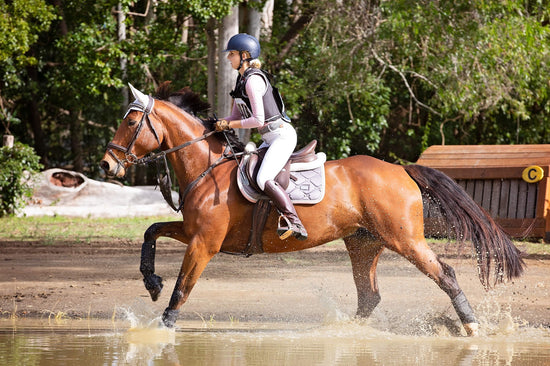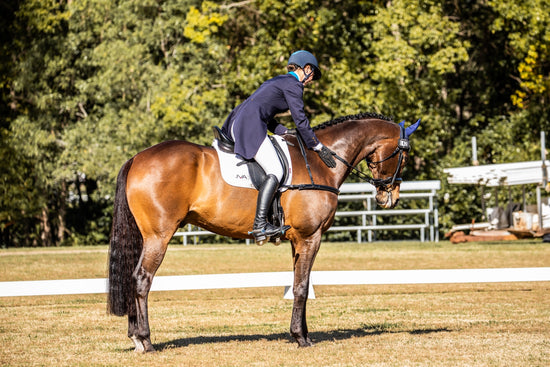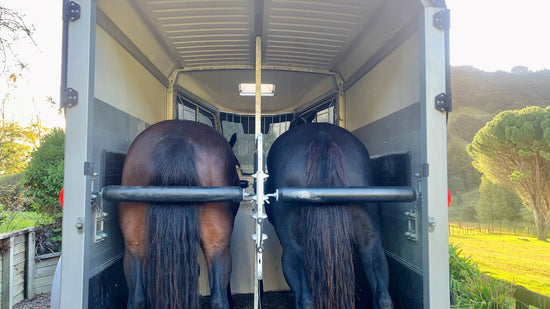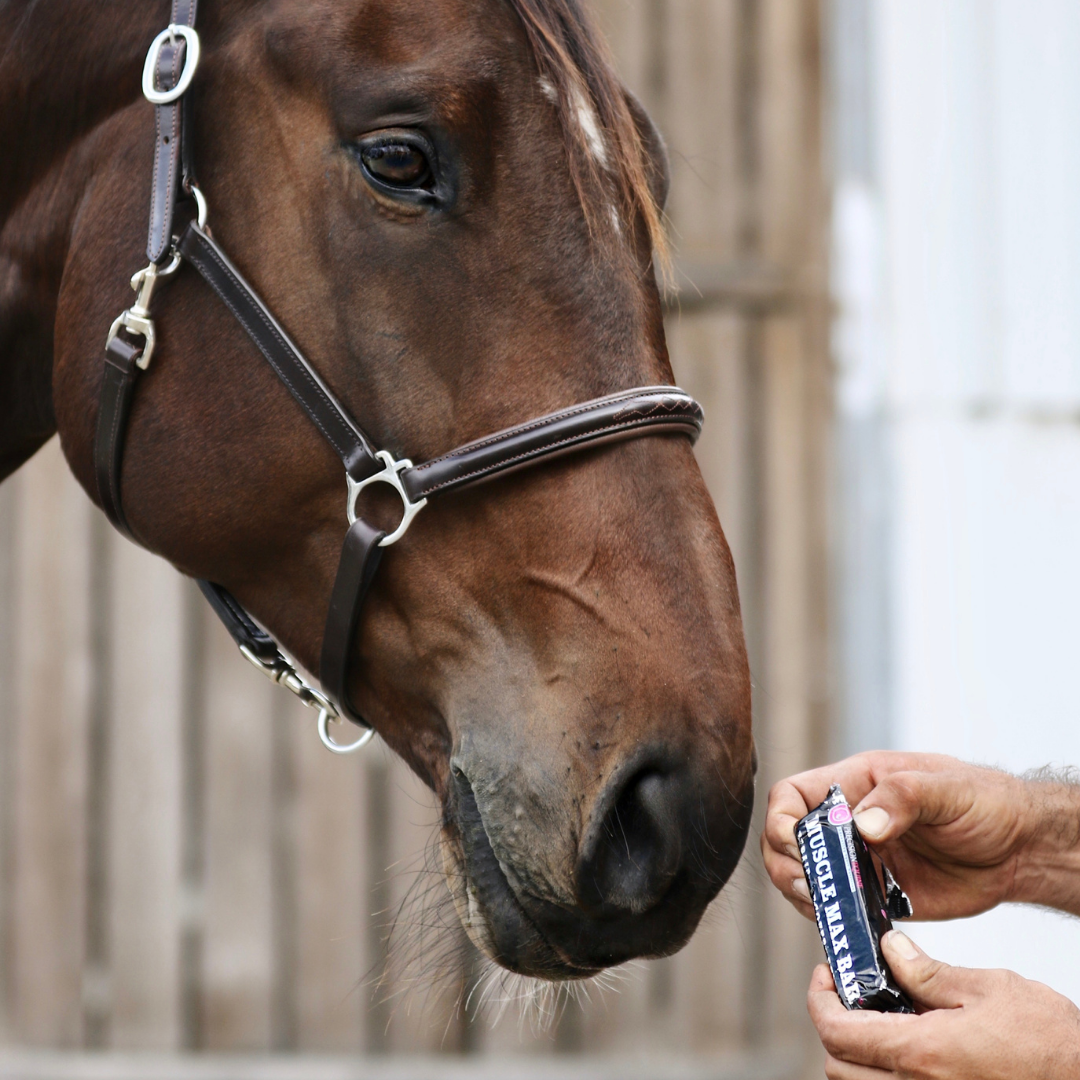Amino acids (protein) and glucose support horses in their exercise
This 2013 Study published in the Journal of Equine Veterinary Science researched the effects of daily administration of an amino acid-based supplement on muscle and exercise metabolism in working horses.
In humans, muscle protein synthesis can be accelerated by administering amino acids and glucose, because increased availability of amino acids and increased insulin secretion is known to have a protein anabolic effect. Researchers wanted to find out if the same was true for horses and studied thoroughbreds.
Administration of amino acids following exercise accelerated the rate of synthesis of muscle protein in the horses, and this effect was enhanced when combined with glucose, because of increasing insulin secretion or a decreased requirement for amino acids for energy.
Feeding your horse after exercise to help look after the muscles
During exercise a horse’s muscles experience multiple little rips and tears that have to be repaired. The muscles also need to grow, strengthen and tone so they can cope with the work required of them.
Ensuring crude protein and lysine requirements are met [...] will mean your horse’s muscles have access to plenty of amino acids to repair and grow, however supplying high quality protein in the form of whey protein concentrate immediately following work (within the first 15 minutes of finishing exercise) may help lightly muscled horses build muscle bulk faster.
Feeding your horse protein soon after exercise supports muscle recovery
The muscle building results of protein supplements have been shown to be most effective when the horse consumes the protein supplement within 20 minutes of completing exercise.
This 2021 study published by Oxford University Press on behalf of the American Society of Animal Science suggests that feeding post-exercise may facilitate better muscle protein balance (synthesis vs. breakdown) in the recovery period following exercise.
The scientists observed that the horses fed after exercise not only had more amino acids in their plasma than those fed earlier or not at all, but that the level of amino acids dropped quicker, suggesting that they were being utilized for recovery (which would help the horse to build more muscle).
“In the horses fed following exercise, the levels of branched-chain amino acids declined more rapidly than other amino acids, suggesting greater utilization of these amino acids by the muscles to help fuel recovery,” explained Catherine Whitehouse, M.S., a Kentucky Equine Research nutrition advisor.
This is why we recommend feeding Muscle Max Bar to your horse within 20 minutes of completing training to support them in developing more topline muscle and over-all muscle building.
Combination of amino acids & glucose after exercise alters horses plasma amino acid profile
This 2012 research published in Acta Veterinaria Scandanavia was carried out to determine if horses would react like humans to amino acids after exercise. The branched chain amino acid leucine in combination with glucose can increase the insulin response and the post exercise re-synthesis of muscle glycogen and protein synthesis rates.
After exercise, Standardbred Trotters were given a mixture of leucine and glucose, and like in humans, it altered the plasma amino acid profile. Repeated post-exercise administration with a mixture of leucine and glucose caused a marked insulin response and altered the plasma amino acid profile in horses in a similar manner as described in man. However, the decreases seen in plasma amino acids in horses seem to be related more to an effect of leucine (the amino acid) in the Standardbred trotters, and more to the insulin response in people.
It is postulated that the drop in amino acids indicates that they are being used to synthesise/build the horses muscles post-exercise.
The simple solution is to add good quality protein to your horse's diet
Note this is written by a qualified and experienced Vet, but is an opinion piece based on his observations since 1984, not a research study.
If your horses are lame, if their top line is melting away, if skin disease plagues them, ask yourself why. Then read this article by Doc T to hear why he thinks that most horses have a chronic protein deficiency.
Horses in the wild consume a lot of good quality, live forage with good quality protein in the natural habitat during seasons when it is available. Proteins in mammals don’t last long, and the average life span of a protein is about 1 to 2 days. Add to that the fact that not all proteins eaten are absorbed and used equally.
The best indicator of good quality protein consumption is the top line because this is made of muscle only, which is almost all protein.
Lame horses are at an epidemic level now followed by skin issues, insulin resistance and pituitary dysfunction (Cushing's). If your horse is prone to laminitis or has poor quality hooves, it may be valuable to add a good quality protein source. Doc T's solution is simple - add good quality protein to the horse’s daily intake, record all your observations, and be patient.
(Find out why not all protein is equal, and why the Whey Protein Isolate in Muscle Max Bars is top quality for horses!)
How protein repairs muscle after exercise
Written by Ryan Andrews, adjunct instructor at the State University of New York with master’s degrees in both Nutrition and Exercise Physiology from Kent State University and a Bachelor's in Exercise Science from the University of Northern Colorado, Registered Dietitian, Certified Strength and Conditioning Specialist, a certified exercise physiologist, and a Registered Yoga Teacher.
When we work out intensely, we damage tissues at the microlevel, and we use fuel. This is what ultimately makes us stronger, leaner, fitter, and more muscular, but in the short term it requires repair. Repair and rebuilding occurs through the breakdown of old, damaged proteins (aka protein breakdown) and the construction of new ones (aka protein synthesis).
Muscle hypertrophy occurs when a positive protein balance can be established during recovery — in other words, when we make sure we have enough raw materials available for protein synthesis to occur, so that it doesn’t lag behind protein breakdown.
Read the full article here by Ryan Andrews.
How energy sources influence glucose effectiveness in horses
This 2006 article from the Equine Vet Journal studied how dietary energy sources influence how Arabian geldings are affected by endurance exercise and diet, with a focus on insulin sensitivity and glucose effectiveness.
Insulin and glucose dynamics adjust during exercise, increasing plasma glucose uptake, presumably to meet demand by contracting skeletal muscle. Trained horses adapted to a high fat and fibre diet showed greater metabolic adjustment during exercise than trained horses adapted to a high starch and sugar diet, potentially allowing them to better meet energy demands.
How amino acids improve endurance
From First Endurance written by MD Jeff Rocco.
This article explains how amino acids are the building blocks of muscle, and how the body has to break down protein into amino acids before they can function so consuming amino acids in free form allows them to work faster. As well as building muscle, amino acids help athletes burn fat, and also help improve glycogen resynthesis, mineral absorption, and focus during exercise.
The article also explains how branched chain amino acids (BCAAs) like in Muscle Max Bars can boost both strength and endurance training results.
Muscle Max Bars deliver a concentrated dose of essential amino acids, including the three branched chain amino acids Leucine, Isoleucine and Valine, as well as a big dose of Glutamine which is very important for muscle repair and rebuilding after exercise.





